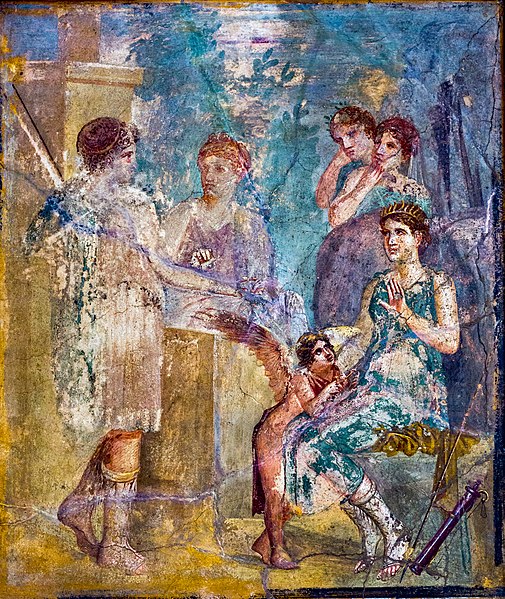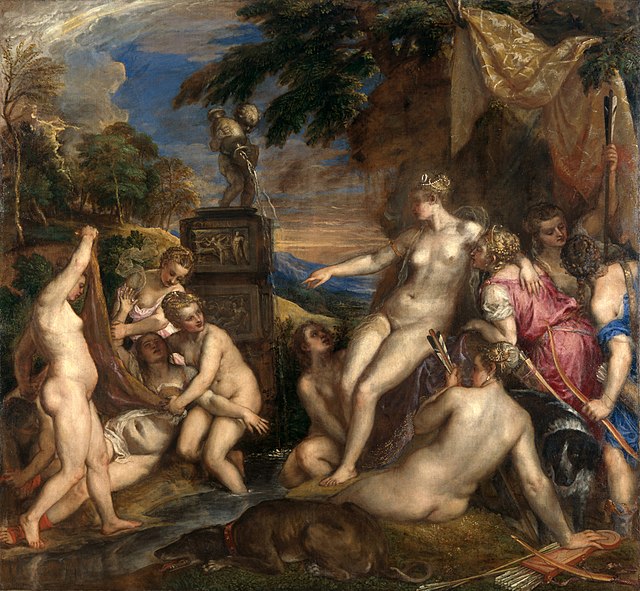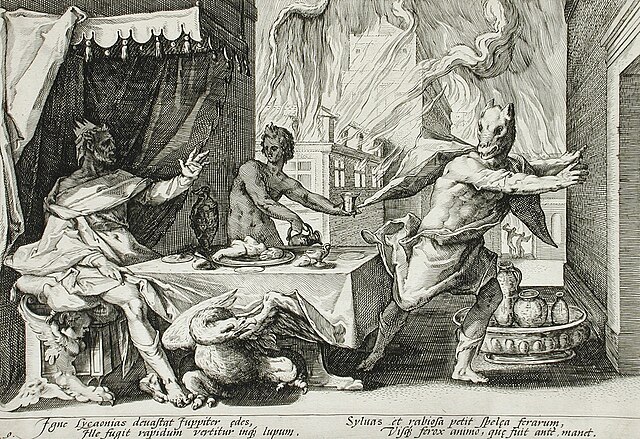In Greek mythology, Callisto was a nymph, or the daughter of King Lycaon; the myth varies in such details. She was believed to be one of the followers of Artemis who attracted Zeus. Many versions of Callisto's story survive. According to some writers, Zeus transformed himself into the figure of Artemis to pursue Callisto, and she slept with him believing Zeus to be Artemis. She became pregnant and when this was eventually discovered, she was expelled from Artemis's group, after which a furious Hera, the wife of Zeus, transformed her into a bear, although in some versions, Artemis is the one to give her an ursine form. Later, just as she was about to be killed by her son when he was hunting, she was set among the stars as Ursa Major by Zeus. She was the bear-mother of the Arcadians, through her son Arcas by Zeus.
Artemis (seated and wearing a radiate crown), the beautiful nymph Callisto (left), Eros and other nymphs. Antique fresco from Pompeii.
Titian's Diana and Callisto (1559) portrays the moment when Callisto's pregnancy is discovered.
Jupiter in the Guise of Diana Seducing Callisto, Jacob Adriaensz Backer, oil on canvas
Apulian Red-Figure Chous (Shape 3) with Kallisto Turning into a Bear, about 360 BCE, Terracotta, Attributed to Near the Black Fury Group (Greek (Apulian), active early 300s BCE), J. Paul Getty Museum
In Greek mythology, Lycaon was a king of Arcadia who, in the most popular version of the myth, killed and cooked his son Nyctimus and served him to Zeus, to see whether the god was sufficiently all-knowing to recognize human flesh. Disgusted, Zeus transformed Lycaon into a wolf and killed his offspring; Nyctimus was restored to life.
Zeus turning Lycaon into a wolf; engraving by Hendrik Goltzius.





